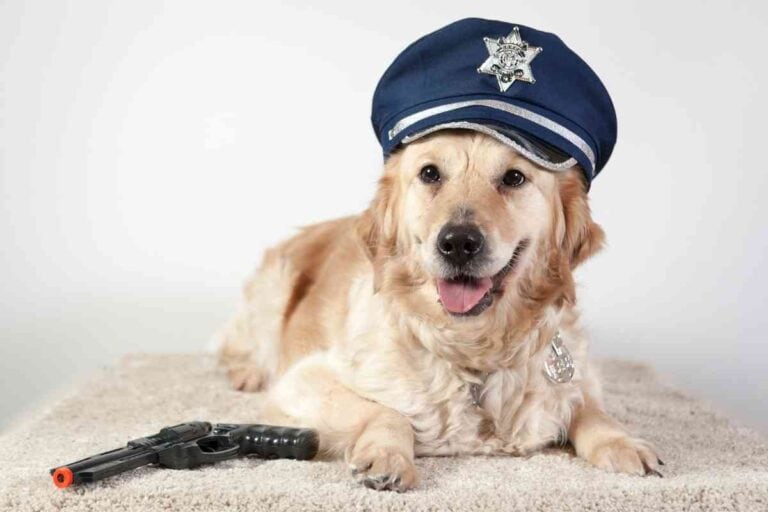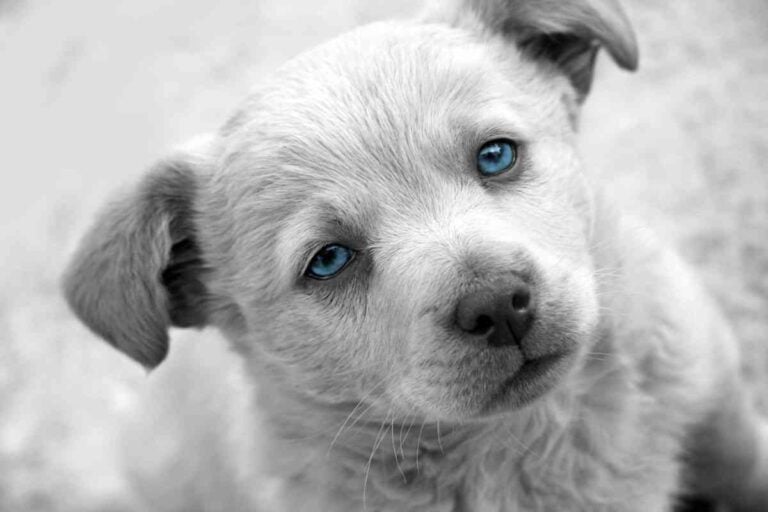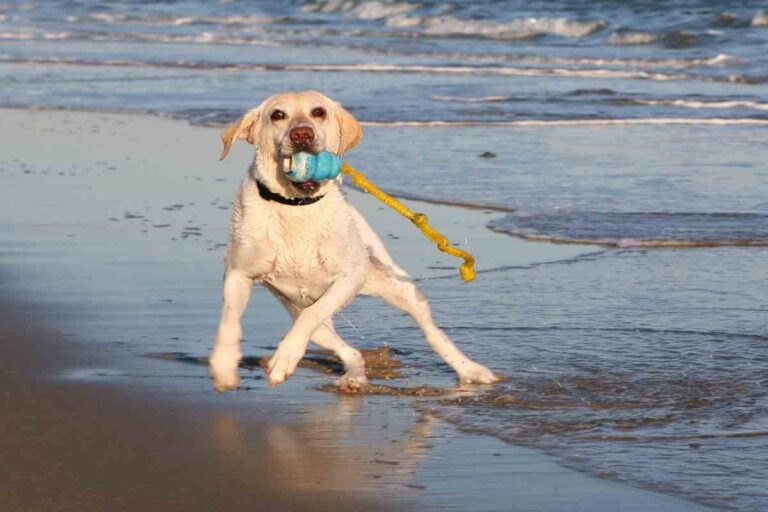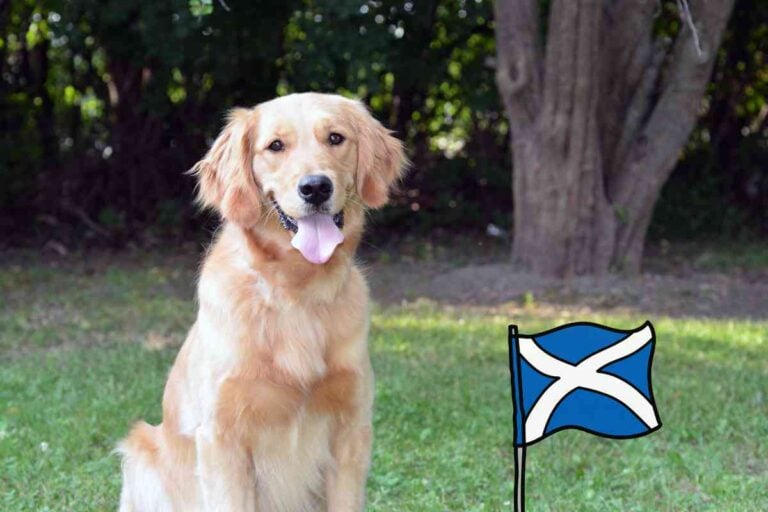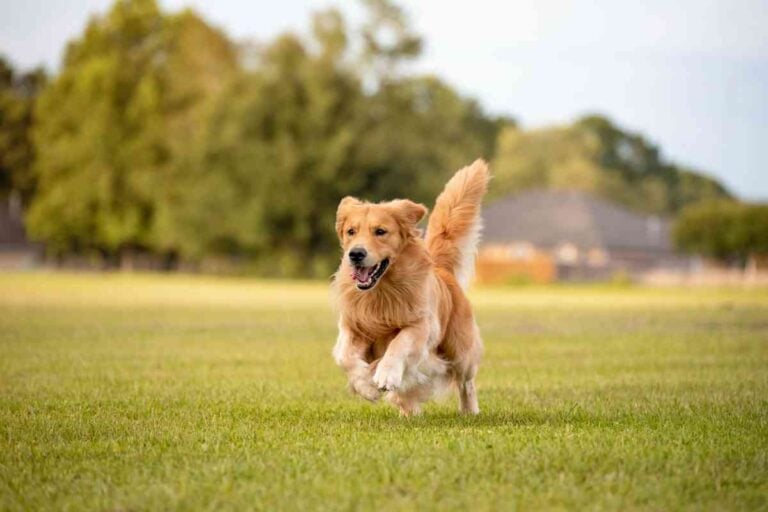What To Expect When Caring for A Curly-Coated Retriever
Each dog, no matter what breed they are, needs a lot of care and attention to live a healthy and happy life.
A curly-coated retriever is no different.
From grooming routines to health problems to look out for, there are plenty of things to keep in mind and research before getting your new dog.
What To Expect When Caring for A Curly-Coated Retriever
With a curly-coated retriever, there are many things that you should expect. A few things to start with are their exercise needs, combing their curly coats, and keeping an eye on their eyes. There are many more things to expect, and we will dive deep into what these things are below.
What Should I Expect When Grooming My Curly-Coated Retriever?
Curly-coated retrievers have curly coats, as their name implies. These coats require different grooming habits than a straight fur coat would.
Combing
First, don’t get a brush.
Using a brush on your dog’s curly hair will only make it super frizzy and prevent their coat from doing its job.
What you should get instead is a comb. That way, you will easily be able to work through your curly-coated retriever’s coat while protecting it.
If your dog’s coat does get frizzy, simply spray some water onto the frizzy patch and it will return to normal as it dries.
Combing can be done once in a while, but the best time to comb your dog’s fur is when they are in a shedding season.
Curly-coated retrievers are average shedders with two main shedding seasons.
Combing during a shedding season will help your dog along with the shedding process which will mean less curly hair all over your house.
Bathing
It is important to not bathe your curly-coated retriever very often.
Bathing should only be an occasional task and only when your dog really needs it.
The main reason why you shouldn’t bathe your curly-coated retriever too often is that the process will mess with their coat.
Usually, bathing a dog includes shampooing their coat.
However, shampoo on a curly-coated retriever’s coat will soften the fur and the change in texture will prevent the coat from doing what it’s meant to do, protect your dog’s skin.
When you do need to shampoo their fur, don’t let them run around in harsher terrains or go swimming for a few days.
After a few days, their coat should return to normal.
During their bath would be a good time to do any treatments that your dog may need.
This would include any medical treatments your vet suggests, preventative flea and tick treatments, and others.
Trimming
You don’t need to worry about shaving your curly-coated retriever’s coat.
It doesn’t grow very fast so shaving wouldn’t do much.
However, there are places that you should keep trimmed.
Around your curly-coated retriever’s ears and feet you should trim the fur when it starts to grow too long.
This will keep your curly-coated retriever free from irritation that could come from being poked in the ear from fur or being thrown off balance by heavy feet.
What Exercise Needs Should I Expect for My Curly-Coated Retriever?
Curly-coated retrievers have always been super active dogs.
They were first bred for their hunting and retrieving abilities, so they have always needed lots of exercise to keep up with their demands.
On average, curly-coated retrievers need about 40 minutes of exercise a day.
This may seem like a lot, but if you have a decent size backyard or like to go on walks, this will be easy.
Different ways of getting your dog’s daily exercise in can be as simple as playing, letting them run around in the backyard, taking them to a dog park, taking them on walks, and bringing them along on any outdoor activities of your own.
If you are an active person or are in an active family, then a curly-coated retriever would be a great addition to your family.
As long as you include your dog in some of your outdoor activities, your dog will also have a great time running around and sharing your activities.
What Kinds of Health Problems Should I Look Out For?
No dog is immune to health problems of any kind. Actually, most dogs are actually prone to at least dental problems.
Curly-coated retrievers have a list of the kinds of health problems that they are prone to.
Some health problems that they might face are worse than others.
Bone Problems
These active dogs can be really tough on their joints, which then causes joint pain and other problems.
Curly-coated retrievers are prone to both hip and elbow dysplasia.
This causes arthritis-like pain which can be treated with medication or surgery can be done to solve the problem overall.
Curly-coated retrievers can also have knee problems.
Just like how we can sometimes have our shoulder or knee slip out of place, that can happen to a curly-coated retriever’s knee.
Most of the time, they can put the bone back in place themselves.
However, if this is an ongoing issue on both sides, it can start to cause a lot of pain really quickly and surgery may be required.
Eye Problems
Curly-coated retrievers are more prone to eye problems than the average dog.
In many cases, untreated eye problems can lead to blindness along with pain.
One of the least painful eye problems your curly-coated retriever can have is cataracts.
Surgery can be done to fix the problem, but many dogs adjust to cataract-caused blindness pretty well.
The other nonpainful eye problem is the genetic disease of Progressive Retinal Atrophy (PRA.) Nothing can be done about this as it is a disease that simply causes your dog to lose their sight.
Curly-coated retrievers can also face problems with the hair around their eyes and their eyelid.
Entropion and Ectropion are both problems that these dogs can face
Entropion involves the eyelid rolling inward where the eyelashes will scratch the eye.
Ectropion involves eyelashes growing inside the eyelid and scratching the eye.
Both of these can cause blindness if left too long.
If a simple surgery is done early enough, then your curly-coated retriever will be okay.
However, these are painful problems for your curly-coated retriever to have.
Bugs and Disease
Curly-coated retrievers love to run around outside and that includes running around in tall grass or harsh underbrush.
If your curly-coated retriever loves to run along hiking trails or in the woods, they may be susceptible to getting fleas, ticks, or other bug-borne diseases.
While their coats are grown in order to protect the skin, they aren’t immune to bug bites, especially on their face.
Keeping track of the kinds of bugs are in your area can help you learn what to look out for.
If your curly-coated retrievers love to swim, try and make sure they don’t swim in dirty water. They can get sick from dirty water, even if their curly coats are waterproof.
What Should I Expect with Training My Curly-Coated Retriever?
Curly-coated retrievers highly benefit from being trained in multiple aspects.
You should expect to start training as soon as you bring your curly-coated retriever home.
The first steps of training can be done between you and your dog at home.
These include basic obedience training, basic commands, and potty training.
The sooner your dog learns these things, the better.
Once they have the basics down and are a little older, you can start taking them to a professional trainer.
From here, they can train your curly-coated retriever to do more complex tasks.
You can have your dog trained in agility, leadership, hunting, retrieving, and more.
Expect your curly-coated retriever to pick up new behaviors and orders quickly. They are very intelligent dogs and like to learn new things.
Another kind of training you should expect for your retriever is socialization.
Curly-coated retrievers are naturally timid around strangers and can be super cautious and reserved.
With socialization, they can become more comfortable around other people and animals.
This is important training if you ever plan on bringing another dog into your home.
Final Thoughts
There are so many things to expect from your amazing curly-coated retriever.
This breed is complex with its many unique qualities.
Expect them to be intelligent, loving, loyal, and amazing around your family.
Don’t expect to be bathing your retriever too frequently.
Curly-coated retrievers do the best with occasional baths and semi-regular combing.
Always be aware of the kinds of health problems that your curly-coated retriever may have.
Check your dog’s eyes and the way they walk every once in a while, to make sure they’re okay.
Preventative action is valuable considering your dog’s comfort and lifespan.
Expect lots of training with your curly-coated retriever.
Training lets them be active and work their mind, helping their growth both physically and mentally.
Overall, expect your curly-coated retriever to have a big heart.
They love their owners so much and would do anything for them. So, you must care for them as well.

